Yes, you read that right. $299 for a full Aero Carbon Road Bike Frame. Trifox Bike's X8 model is dropping jaws and potentially barriers to entry for carbon performance. But is this too good to be true? Let's break it down.
What You Get (Specs Matter!):
Material: Toray T800 Carbon Fiber . This is a legitimate, high-modulus grade used by many reputable brands.
Weight: Claimed ~1250g (size M) – impressively light for the price.
Aero Design: Truncated airfoil tube shapes, integrated seatpost clamp, and aero seatpost (included!) aim to cheat the wind.
Compatibility: Designed for rim brakes (V-brakes/cantilevers - crucial point!), standard road groupsets (Shimano 10/11s), and a conventional cockpit. Includes headset, seatpost clamp, and derailleur hanger.
If you dream of a lightweight carbon build but have champagne taste on a beer budget, this is your starting block.
Prioritize weight and aero gains? Don't mind rim brakes? This could be a rocket ship.
Experienced Tinkerers: Comfortable sourcing parts and building a bike? The value proposition is immense.

The Trifox X8 frame is a legitimate disruptor. For $299, you get a very light, aero-profiled carbon frame using reputable materials.
Is it worth it? If you understand the limitations, crave a lightweight carbon project, and prioritize raw speed/weight over all-weather braking and cutting-edge standards, this deal is borderline revolutionary. It proves high-performance carbon can be accessible.
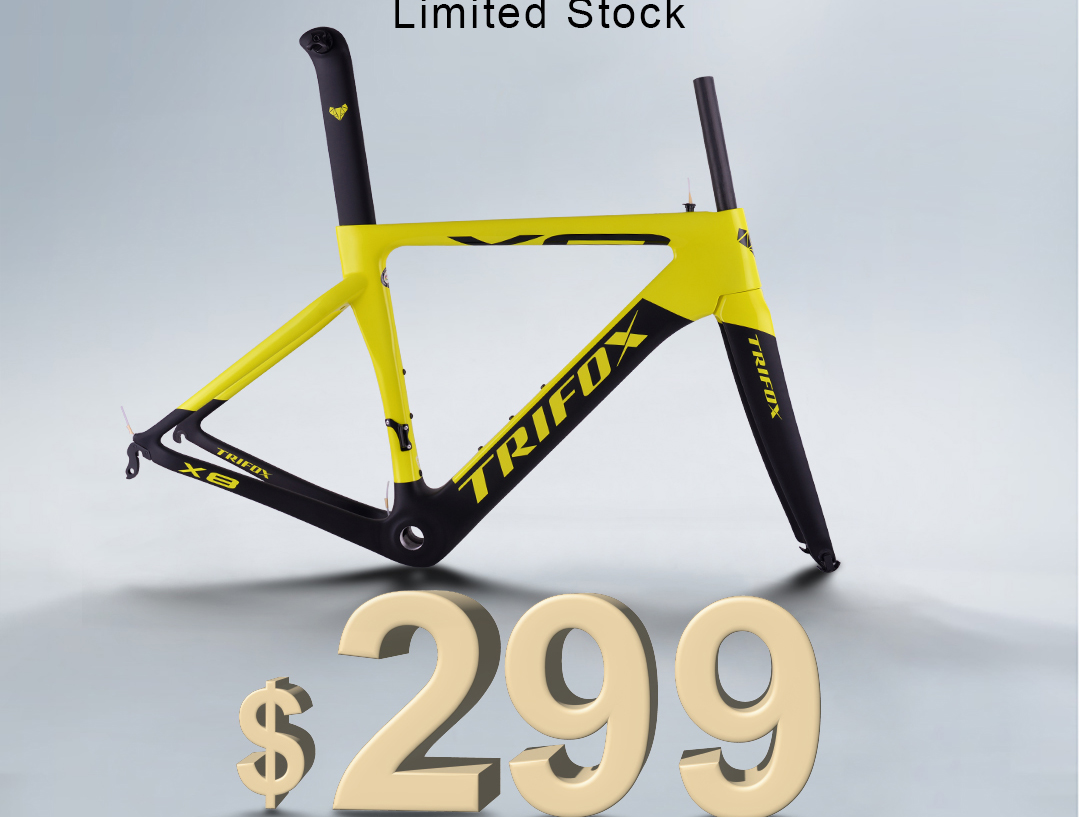
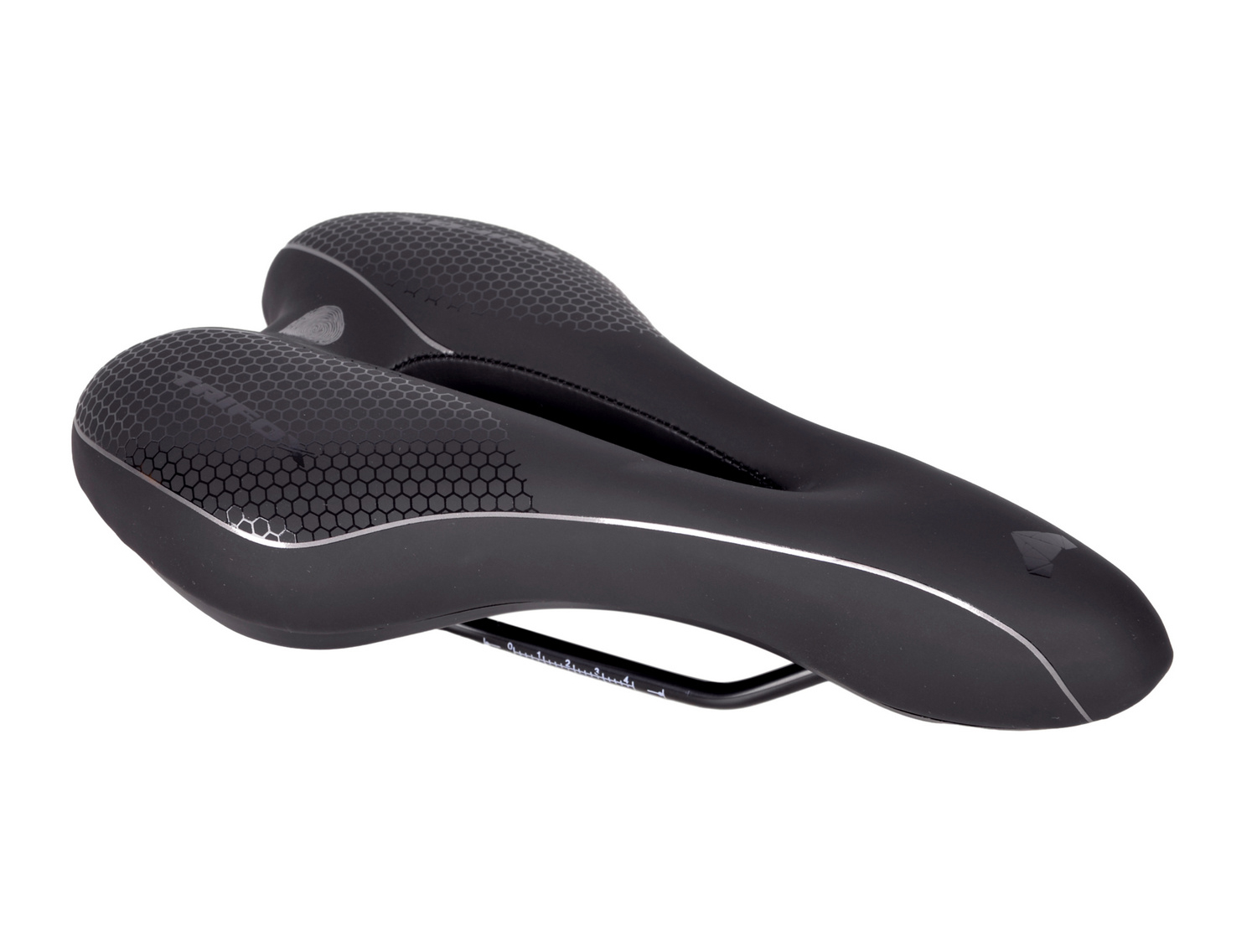
Let's be honest: an uncomfortable saddle can turn the joy of cycling into pure misery. Numbness, chafing, and soreness aren't badges of honor – they're signs you need a better perch! Choosing the right saddle is crucial for pain-free, enjoyable miles. Forget the "toughen up" myth; comfort is king. Here’s how to find yours:
1. Anatomy is Destiny (Especially Gender): Men and women generally have different pelvic bone structures and soft tissue needs. Women's saddles are typically wider at the back with a shorter nose and often a wider central cutout/longer channel. Men's saddles are often narrower. Start by looking at saddles designed for your anatomy. Unisex options exist, but prioritize your specific needs.
2. Riding Position Dictates Shape: How you sit on the bike dramatically impacts pressure points.
Upright (Commuting/Cruising): You sit more squarely on your sit bones ("ischial tuberosities"). Look for a wider, more padded saddle with ample support directly under these bones.
Moderate Lean (Fitness/Gravel): Weight shifts slightly forward. A medium-width saddle with some curvature and moderate padding or a pressure-relief channel is often ideal.
Aggressive Lean (Road Racing/TT): Your pelvis rotates forward, placing more pressure on the soft tissue between your sit bones and pubic arch. Narrower saddles with a distinct curve, minimal padding, and a pronounced channel or cutout are essential to relieve perineal pressure.
3. Measure Your Sit Bones : This is the most important step! Your sit bones need to be properly supported. Many bike shops have simple "assometer" pads you sit on to measure the distance between your sit bones (center-to-center). Add 20-30mm to this measurement – this is generally your ideal saddle width range. Don't guess!
4. Padding: Less is Often More: Thick, soft padding feels great in the shop for 30 seconds, but on a long ride, it compresses, loses support, and can actually cause more chafing and soft tissue pressure. Look for supportive foam or gel strategically placed over the sit bone areas, with firmer bases. Quality materials matter.
5. Pressure Relief is Paramount: Cutouts or elongated channels in the center are designed to reduce pressure on nerves and soft tissue (critical for preventing numbness). If you experience numbness, prioritize saddles with this feature. The size and shape of the relief area vary significantly – try different options.
The Golden Rules:
- Ignore the "Break-In" Myth: A good saddle should feel mostly comfortable on the first few rides. Minor adjustments might happen, but it shouldn't cause significant pain.
- Test Ride is Essential: Reputable shops often have demo saddles or generous return policies. Ride it for at least a few hours over your typical terrain before committing. What feels okay for 10 minutes might be agony at 60.
- Perfect Fit Trumps Brand/Price: The most expensive or popular saddle isn't necessarily your saddle. Focus on the fit fundamentals above.
- Position Matters Too: Ensure your saddle height and fore/aft position are correctly set. Even the perfect saddle won't work if it's poorly positioned.
Finding your perfect saddle takes patience and testing, but the payoff -miles of comfortable, pain-free riding – is absolutely worth the effort. Ditch the discomfort and saddle up for joy!

Think your stem is just a boring metal tube connecting your handlebars? Think again! That unassuming component plays a surprisingly pivotal role in your ride's comfort, control, and even efficiency. Yes, your stem makes a significant difference. Here's why:
1. Fit is King: This is the stem's PRIMARY job.
Reach: A stem that's too long forces you to over-stretch, straining your back, shoulders, and neck. Too short, and you're cramped, potentially hurting your knees or feeling twitchy. The right stem length dials in your perfect distance to the bars, promoting a comfortable, powerful, and sustainable position.
Height: A stem's angle (often +/- 6° or 10°) and stack height (via spacers) dramatically impact your handlebar height. A higher stem offers a more upright, relaxed posture (great for comfort, commuting, endurance). A lower stem creates a more aerodynamic, aggressive position (favored for racing or performance). Getting this wrong can lead to numb hands, back pain, or neck strain.
2. Handling & Control:
Stability vs. Agility: Stem length directly influences steering feel. A longer stem provides more stable, slower steering – ideal for descending at speed or loaded touring. A shorter stem makes the steering feel quicker and more responsive, beneficial for tight corners, technical trails (on MTBs), or criterium racing. Changing stem length can subtly (or dramatically) alter how your bike handles.
3. Material Matters (A Bit):
Weight: Stems come in aluminum (most common, affordable, strong), carbon fiber (lighter, can dampen vibration slightly, pricier), and steel/titanium (less common). While weight savings are marginal compared to wheels or frame, every gram counts for some riders.
Stiffness: A stiff stem (often aluminum or high-end carbon) ensures efficient power transfer from your upper body during hard efforts or sprints. Excessively flexy stems feel vague and waste energy. Most modern stems offer sufficient stiffness.
4. The "Performance" Myth (Kinda):
Don't expect swapping stems to suddenly make you significantly faster like aero wheels might. Its performance impact is indirect: enabling an efficient, comfortable position you can hold longer, and providing the right handling for your terrain.
The Crucial Takeaway:
The right stem for YOU makes a massive difference in comfort and control. The wrong stem can make riding miserable or even painful. Changing your stem is one of the most cost-effective ways to dramatically improve bike fit and ride feel.
Before You Swap: Small changes (like 10mm in length or flipping the angle) can have a big effect. If you're experiencing discomfort or handling issues, consult a professional bike fitter. They can determine if a stem change is the solution and recommend the perfect specs for your body and riding style. Don't just guess – get it right and transform your ride!
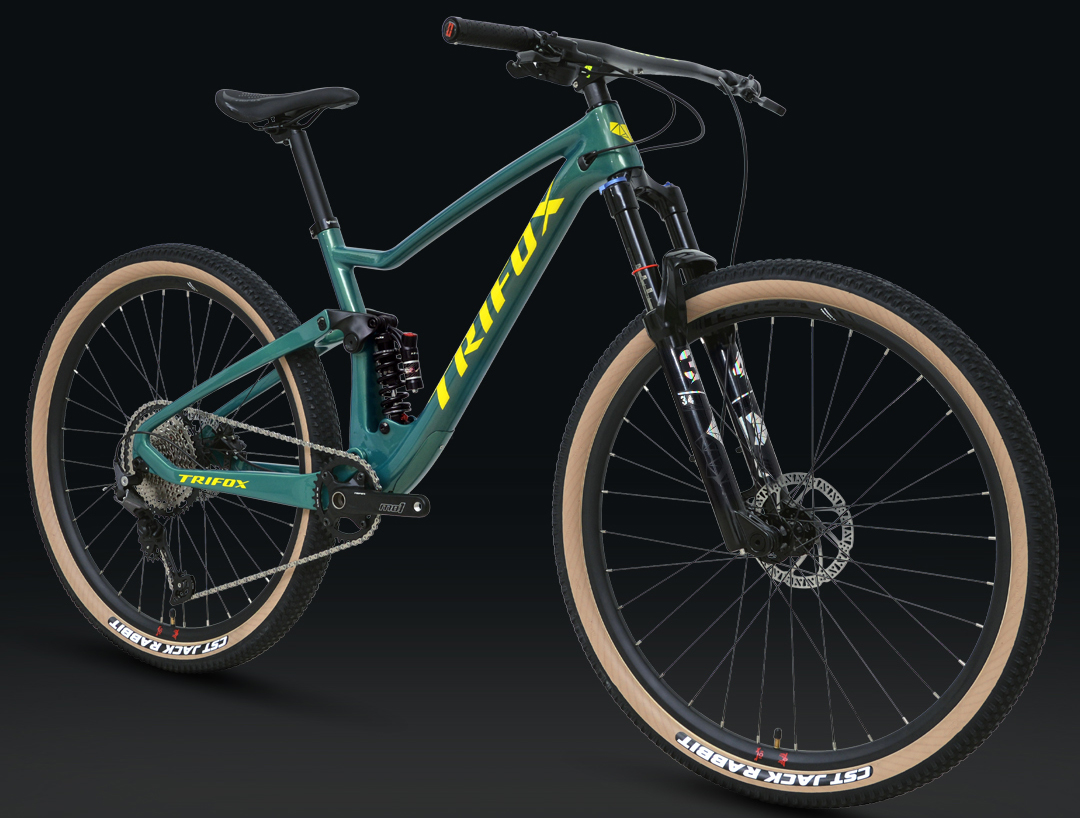
In an era dominated by plush suspension, choosing a rigid mountain bike seems counterintuitive, even masochistic. But hear us out! Ditching the squish unlocks a unique, rewarding experience that many riders crave. Here’s why rigid is rad:
Pure Connection & Skill Boost: Without suspension masking the trail, you feel everything. Every root, rock, and ripple buzzes through the bars. This forces you to read the terrain ahead, choose smoother lines, and actively use your arms and legs as suspension. It sharpens bike handling skills like nothing else, making you a smoother, more precise rider everywhere.
Simplicity & Reliability: No stanchions to service, no air springs to adjust, no dampers to bleed. Rigid forks and frames are virtually maintenance-free. Fewer moving parts mean fewer things to break, leak, or wear out. Just lube the chain and ride. It’s cycling distilled to its essence.
Weight Savings & Efficiency: Suspension forks add significant weight (often 1.5kg+). Rigid forks are featherweight. This translates directly to a lighter, more nimble bike, especially noticeable when climbing or accelerating. Every pedal stroke feels direct – no energy lost compressing suspension bob.
Cost-Effectiveness: Quality suspension forks are expensive. Rigid forks, especially steel or quality alloy, offer incredible performance per dollar. Building or converting to rigid can save significant cash upfront and long-term on maintenance.
The "Analog" Experience: Riding rigid is raw and visceral. It’s about flow over brute force, finesse over forgiveness. The satisfying buzz of tires on hardpack, the silent glide through the woods – it’s an unfiltered conversation with the trail. Many find it incredibly engaging and fun.
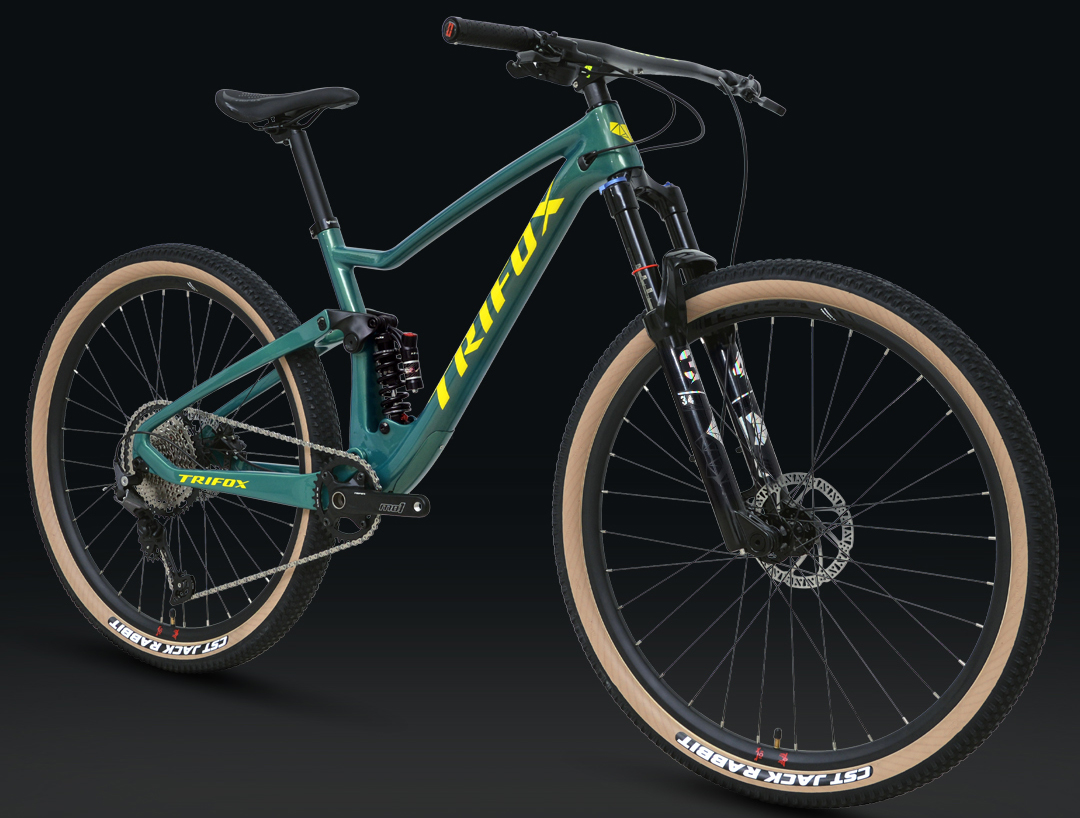
Is it for everyone? Honestly, no. Choppy, high-speed chunk will beat you up. But for flowing singletrack, gravel adventures, bikepacking, commuting, or simply honing your skills, rigid excels.
Ready to simplify? Check out lightweight, durable rigid forks at Trifox Bike. Rediscover the trail. Ride rigid!
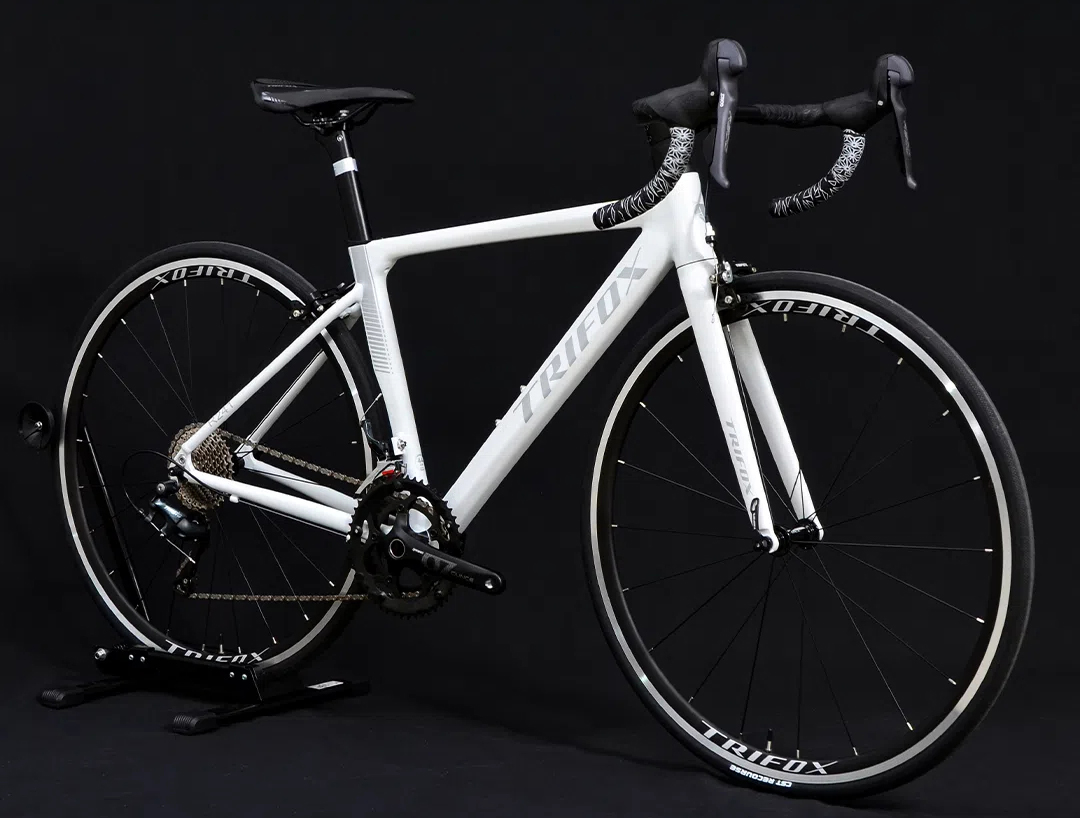
Close your eyes. Remember that first bike? Mine wasn't sleek or light. It was a clunker, a hand-me-down beast probably older than I was. Heavy steel frame, faded red paint chipped to reveal battleship grey primer underneath. Coaster brakes that screeched like a banshee if you dared pedal backwards too hard.
It had fat, knobby tires better suited for mud than pavement, and handlebars wide enough to feel like steering a bus. The seat? A vinyl-covered brick promising maximum discomfort after five minutes. It creaked, it rattled, and the chain guard was perpetually bent.
But oh, the magic. That first terrifying push off without training wheels – pure, unadulterated terror mixed with exhilarating freedom! The wobble felt catastrophic, the ground impossibly far away. Scraped knees? Guaranteed. Gravel embedded in palms? A rite of passage.
It wasn't about speed or style. It was about boundaries dissolving. Suddenly, the corner store wasn't a parental escort away. Friends' houses became independent destinations. The park felt like my kingdom. That heavy beast represented pure, unlicensed adventure. The smell of hot rubber and dusty chains, the wind (sort of) in my hair, the sheer joy of rolling downhill... it was my first taste of true autonomy. That clunky, imperfect machine wasn't just a bike; it was my first passport to freedom, grease stains and all.
What did yours look like? Maybe get your first bike at trifoxbike. Share the memory!
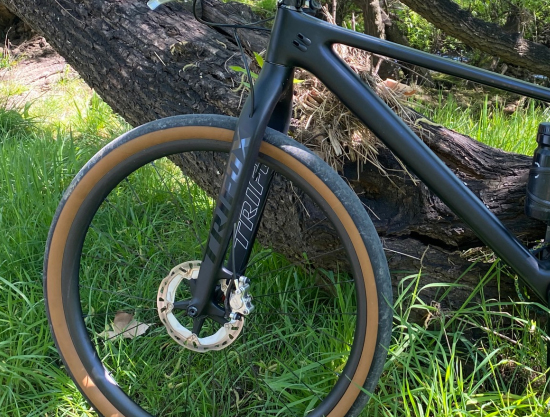
Does your front end feel vague or flex excessively when you really push it? That "noodle fork" sensation – steering wandering under hard cornering, brake shudder, or a general lack of precision – can be unnerving and slow you down. While some flex is inherent and even desirable for small bump compliance, excessive flex hurts control. Here's how to dial in more stiffness:
1. Increase Air Pressure (Air Forks Only): The simplest and most direct adjustment. Adding air pressure compresses the air spring more, requiring more force to initiate movement. This significantly increases the overall stiffness of the fork, especially resisting large impacts and big compressions that cause flex. Crucially: Stay within the manufacturer's recommended maximum pressure (usually printed on the fork leg). Exceeding it risks seal failure or even catastrophic damage. Start with 5-10 PSI increases, test ride, and repeat cautiously.
2. Add Volume Spacers (Air Forks Only): These small plastic tokens fit inside the air spring chamber. They reduce the air volume. Why does this help stiffness? With less volume, the air pressure ramps up much more aggressively deeper into the fork's travel. This primarily increases mid-to-end stroke support. While not directly stiffening the initial feel like pure pressure, it combats the deep dive that often feels like flex under heavy braking or big G-outs, making the fork feel more supportive and planted overall.
3. Adjust Compression Damping:
- Low-Speed Compression (LSC): Found on most mid-to-high-end forks. This controls the fork's resistance to slow, deliberate movements like braking, cornering, and pedaling forces. Increasing LSC adds significant resistance to these forces, directly combating brake dive and the flex/wander feeling during hard cornering. Turn the dial clockwise (usually) a click or two at a time and test.
- High-Speed Compression (HSC): Less common, controls resistance to sharp, fast impacts (rocks, roots). While primarily for tuning big-hit harshness, a slight increase might offer a subtle perception of firmness, but focus on LSC first for stiffness related to steering inputs.
4. Increase Oil Viscosity (Advanced): Fork oil lubricates and dampens. Thicker oil (higher viscosity, e.g., going from 5wt to 7.5wt or 10wt) creates more resistance inside the damper. This makes the damper cartridge stiffer, particularly the compression circuit, requiring more force to move the fork quickly. This is an advanced modification. Research your specific fork model thoroughly – using oil that's too thick can damage internals, make the fork harsh, and void warranties. Best done during a full service.
5. Service Your Fork: Worn bushings, contaminated oil, or degraded seals introduce slop and reduce the fork's ability to move smoothly in its intended path. This often manifests as play or a vague, "sticky" flex feeling. A full lower leg service (replacing oil, seals, and bushings if needed) restores the fork's tightness and responsiveness, eliminating unwanted movement that feels like flex.
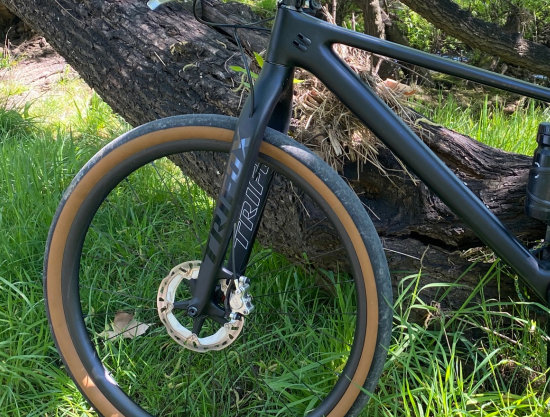
Important Considerations:
- Trial & Error: Stiffness preferences are personal. Make one change at a time and test thoroughly on familiar terrain.
- Trade-offs: Increasing stiffness almost always reduces small-bump sensitivity and plushness. Find the right balance for your riding style and terrain.
- Fork Limits: Every fork has a design stiffness. Aggressive riders on lightweight XC forks will hit limits faster than someone on a burly enduro fork. If you've maxed out adjustments and servicing, a stiffer chassis might be the ultimate solution.
- Headset Check: Ensure your headset is properly preloaded. A loose headset feels like fork flex!
By methodically working through these adjustments – starting with air pressure/volume and compression damping – you can significantly reduce unwanted flex and gain the precise, confident front end your aggressive riding demands.

Upgrading to carbon wheels is a significant investment, but the performance gains are often transformative, not just incremental. Here’s how they change your ride:
1. Weight Savings = Acceleration & Climbing Magic:
Rotational Weight Matters Most: Shedding weight from the wheels (especially the rim) makes a HUGE difference. Lighter rims accelerate faster and climb easier because you're spinning mass, not just carrying it. You feel this instantly when sprinting or attacking hills.
2. Stiffness = Precision & Power Transfer:
Lateral Rigidity: Carbon rims resist flex under hard pedaling and cornering forces. This translates to:
Sharper steering response.
More direct power transfer (less energy lost to flex).
Increased confidence railing corners and pumping terrain.
3. Aerodynamics = Free Speed (Especially Cruising):
Smoother Airflow: Well-designed carbon rims slice through the air more efficiently than boxy aluminum counterparts. This reduces drag noticeably at sustained speeds above ~18-20mph, saving watts on flats and rolling terrain.
4. Vibration Damping = Smoother Ride & Reduced Fatigue:
Material Properties: High-quality carbon layups can absorb high-frequency trail buzz better than aluminum. This reduces hand, arm, and body fatigue on long, rough rides, improving comfort and control.
5. Strength & Durability (When Done Right):
Modern Engineering: Contrary to myths, properly built carbon wheels (from Trifox brands) are incredibly strong and impact-resistant. They excel at handling sharp hits and offer excellent fatigue resistance compared to aluminum.
The Caveats:
Braking Performance: Requires specific resin brake pads and proper bedding-in. Wet-weather performance can still lag slightly behind top aluminum.
Impact Sensitivity: While strong, massive, square-edge hits can cause damage aluminum might dent instead. Ride style and terrain matter.
Diminishing Returns for Casual Riders: The gains are most pronounced for fit, experienced riders pushing their bikes.
Who Feels the Biggest Difference?
- Climbers & Accelerators: Feel the weight savings instantly.
- Aggressive Trail/Enduro/DH Riders: Appreciate the stiffness and damping on rough descents.
- XC & Gravel Racers: Benefit from weight, aero, and stiffness efficiency.
- Riders Seeking "Ride Feel": The damped, lively, precise sensation is unique.
Carbon wheels make a substantial, multi-faceted difference. They are lighter, stiffer, often more aerodynamic, and can provide a smoother, more controlled ride. While expensive, they deliver tangible performance benefits that significantly alter how the bike feels, accelerates, climbs, and handles. For riders prioritizing performance and willing to invest, the upgrade is often considered one of the most impactful you can make.
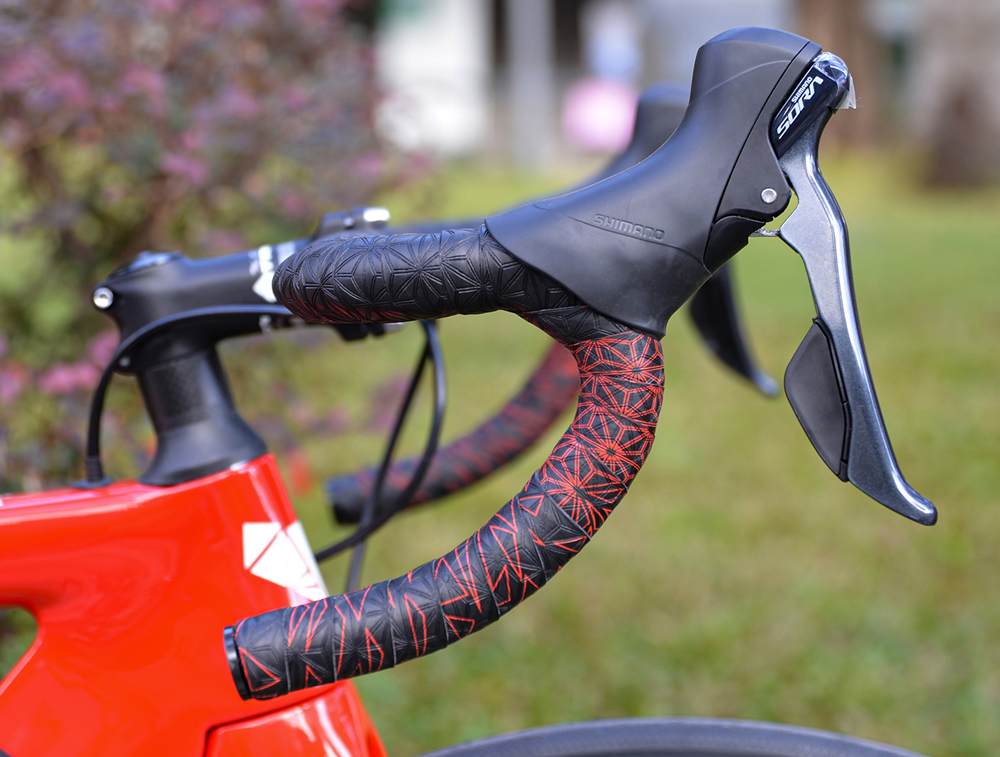
Mounting tape – often double-sided foam tape or specific adhesive pads like 3M VHB – is the unsung hero of clean, secure, and vibration-resistant bike accessory installation. Forget messy zip ties rattling loose or bulky clamps slipping. Here’s why it's essential:
The Core Purpose: Secure, Vibration-Proof Bonding
Its primary job is to create a strong, permanent bond between accessories (lights, computers, bags, sensors) and your bike frame, handlebars, or helmet, while damping damaging vibrations.
Why It Matters for Bikes:
1. Vibration Damping: Foam tapes absorb trail chatter and bumps. This protects sensitive electronics (like bike computers, lights, action cameras) from internal damage caused by constant shaking. Zip ties alone transmit vibrations directly.
2. Rock-Solid Hold: High-quality mounting tape (e.g., 3M VHB) forms an incredibly strong adhesive bond when applied correctly to clean surfaces. It resists shear forces and won’t gradually loosen like straps or ties over rough terrain.
3. Clean, Low-Profile Look: Eliminates bulky clamps, straps, and zip tie tails. Provides a sleek, aerodynamic mounting solution, especially important for computers and lights.
4. Versatile Mounting: Works on curved surfaces (handlebars, seatposts, forks, helmets) and irregular shapes where clamps struggle. Enables precise positioning.
5. Water & Weather Resistance: Good quality tapes resist moisture, dirt, and UV degradation, maintaining their hold through all conditions.
Common Bike Uses:
- Cycling Computers: Securing the mount base to the stem or handlebars.
- Lights: Attaching front/rear light mounts to handlebars, seatposts, or helmets.
- Action Cameras: Mounting GoPro-style adhesive bases to helmets, frames, or handlebars.
- GPS Trackers: Discreetly attaching under saddles or within frames.
- Mini Pumps/Tools: Securing frame-mounted holders.
- Top Tube Bags: Adhering the base plate to the top tube (often combined with straps).
Key Considerations for Success:
1. Surface Prep is CRITICAL: Clean both surfaces thoroughly with isopropyl alcohol. Grease, dirt, or wax prevents adhesion.
2. Pressure Matters: Apply firm, even pressure for 30-60 seconds after placement to activate the adhesive bond.
3. Curing Time: Allow 24-72 hours for the bond to reach full strength before stressing it heavily (e.g., big rides).
4. Choose the Right Tape: Use tapes specifically designed for outdoor, high-vibration use (like Trifox). Avoid weak, thin tapes.
5. Removal: Can be difficult. Use dental floss or a plastic trim tool to slowly saw through the adhesive. Heat (hairdryer) can soften it. Residue requires adhesive removers.
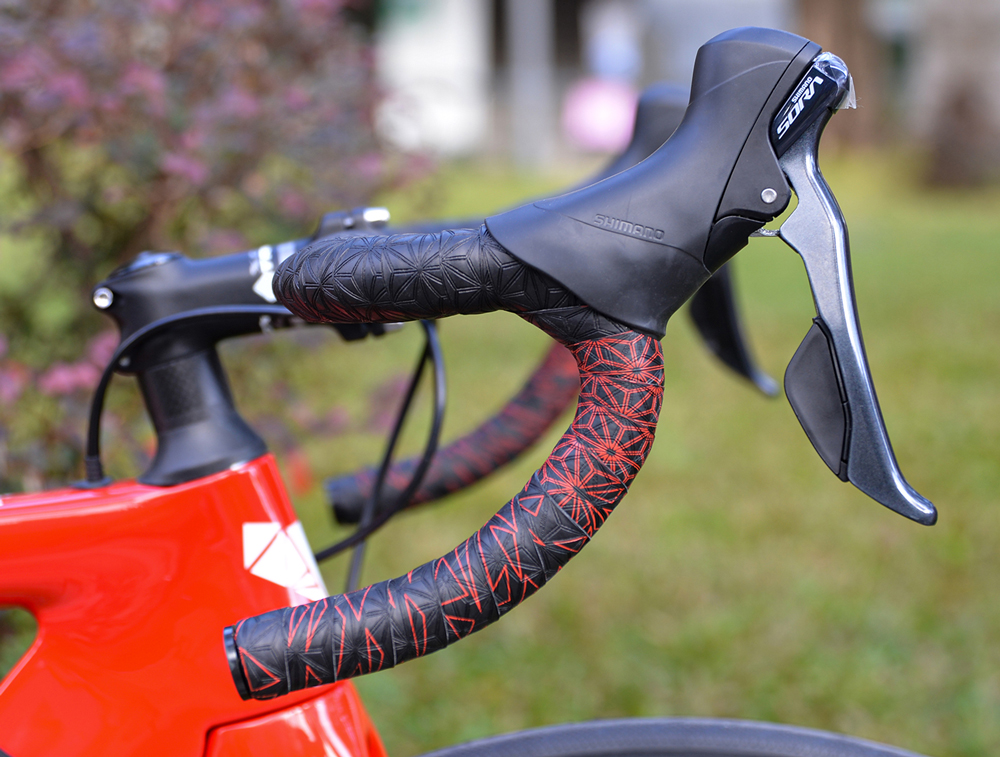
The Verdict:
Mounting tape provides a vibration-damping, ultra-secure, and clean solution for attaching essential gear to your bike. When used correctly on properly prepped surfaces, it’s vastly superior to zip ties or loose clamps for protecting electronics and keeping accessories firmly in place mile after bumpy mile. It’s a simple tool with a powerful purpose!
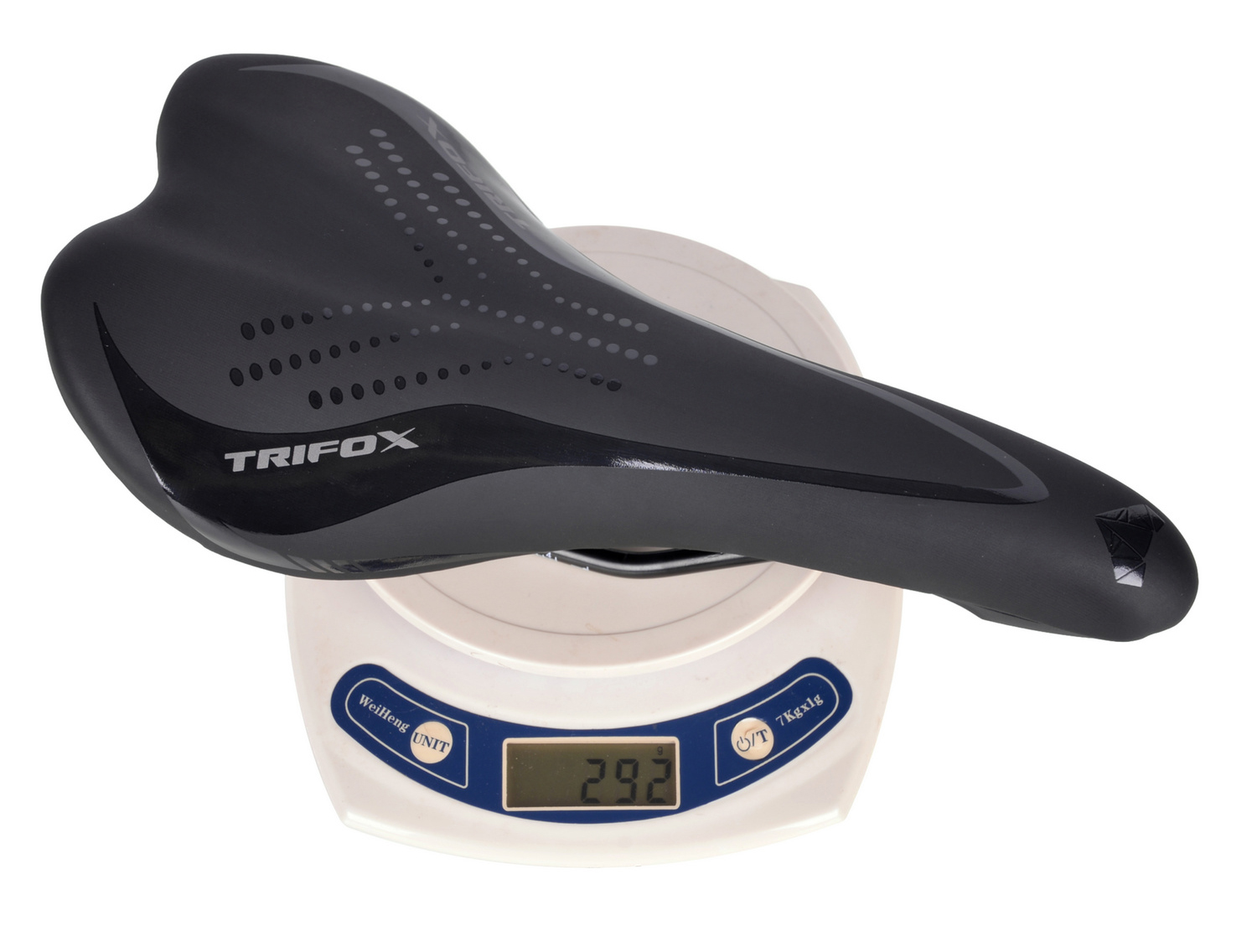
Searching for the "most comfortable" mountain bike saddle is like asking for the best shoe size – there's no single answer. Comfort is deeply personal, depending on your anatomy, riding style, and bike fit.
Why Comfort is Subjective:
1. Sit Bone Width: This is CRITICAL. Your sit bones need proper support. Saddles too narrow or too wide cause pain. Get measured at a shop or use the cardboard-at-home method.
2. Riding Style & Terrain: Aggressive downhillers need different support than long-distance XC riders. More technical terrain often benefits from a shorter nose.
3. Flexibility & Position: Your hip angle and how much you move on the bike influence pressure points.
4. Individual Sensitivity: Some riders need generous padding, others find minimalism better.
Key Features for MTB Comfort:
- Correct Width: Matches your sit bone measurement (usually 2-4cm wider).
- Appropriate Padding: Enough to dampen vibrations but not so much it causes chafing or restricts movement. Too much padding can compress nerves.
- Central Cutout/Relief Channel: Essential for most riders! Reduces soft tissue pressure and numbness on longer rides.
- Shell Flex: A slightly flexible shell absorbs trail buzz better than a completely rigid one.
- Shape: Flat profiles suit aggressive positions; more curved profiles can offer support for upright riding. Short noses improve maneuverability.
Where Do Carbon Saddles Fit In? (Like Trifox Bike's Range)
Carbon saddles (like those offered by Trifox Bike at trifoxbike.com/carbon-bike-saddles) excel in specific areas relevant to MTB comfort:
1. Targeted Flex: High-quality carbon shells can be engineered to flex strategically under your sit bones, absorbing impacts and vibrations from rough trails, while remaining supportive and efficient.
2. Lightweight & Efficient: Significant weight savings over traditional saddles, beneficial for climbing and overall bike feel.
3. Durability: Carbon is highly resistant to wear and tear from crashes and the elements.
4. Minimalist Design: Many carbon saddles feature smart padding placement (often just in the rear zone) combined with relief channels, hitting the sweet spot for riders who find bulky saddles uncomfortable.
Is Carbon Right for You?
Carbon saddles can be incredibly comfortable, especially if you value vibration damping, weight savings, and a direct connection to the bike. However, they often have less overall padding than heavily cushioned models. Riders preferring a very plush feel might initially find them firmer, though the flex often compensates brilliantly for trail chatter.
The Verdict & How to Find YOUR Most Comfortable Saddle:
1. Measure Your Sit Bones.
2. Prioritize a Relief Channel/Cutout.
3. Consider Your Riding Style: Aggressive? Look shorter/narrower. Enduro/Trail? Balance is key. XC? Efficiency and weight matter.
4. Consider Carbon (Like Trifox): If you value precise flex, vibration damping, low weight, and durability, explore quality carbon options.

























































